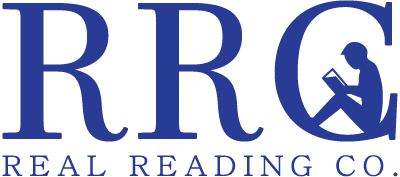A simple affordable classroom fix for improving test scores.
Boost the plan* your school is already using with a solid & successful reading curriculum.
* Fountas and Pinnell, Saxon, SRI, Bob Jones, Abeka, …
Directions and support with every lesson give teachers confidence and success as they again enjoy teaching reading in their classrooms, even those with limited phonics backgrounds.
Ensure a firm phonics foundation with Reading and Spelling Pure & Simple.
Maximize reading scores!
“The students feel and cannot wait to come to reading group to work on their next lesson.”
“I used this program from the last week in January to the first week of April and I had students who went up six reading levels!”
“It is easy to use and your students will LOVE reading. I am excited about teaching reading again.”
“After only three weeks my students jumped in the SRI [Scholastic Reading Inventory] scores two to four grade levels!”
1
Reading difficulties are resolvable through the strategies found in this book.
Reading and Spelling addresses many of the problems that hamper students’ ability to learn to read. Those with dyslexia, ADHD, dysgraphia, or sensory processing issues have benefited immeasurably from using our curriculum, as have children on the autism spectrum, ESL, and ELL students whose first language is Spanish, Burmese, Vietnamese, and a number of other foreign languages. The textbook has been very successfully used in Tier 2 (Response to intervention) programs. Educators find it simple to use and highly effective when implementing an IEP or Section 504 Plan.
Effective ways for helping students are explained throughout the curriculum. You can easily access these tips by scanning the book’s table of contents.
2
Reading and Spelling Pure & Simple is highly recommended for RTI programs.
School districts are looking for affordable Tier 2 intervention programs for use in Response to Intervention (RTI) structures. Most current Tier 2 programs are expensive, with schools typically being required to make a several-year commitment of time and funds for students to participate. On top of that, teachers usually must undergo costly, specialized training. The prevailing disappointment is that many RTI programs produce negligible or only modest results. As one Tier 2 reading specialist observed:
“During our RTI meetings, we discuss how not all students make adequate progress with our current program, so there is a need for additional programs from which to choose. It is my experience that even with the best program and intensive 1 on 1 intervention, there may be a lack of progress and it’s nice to be able to brainstorm during a meeting and have multiple programs to choose from as you look at the student’s strengths and weaknesses.”
Compared to expensive RTI curricula, Reading and Spelling Pure & Simple is affordable, and our lessons are easily and quickly introduced into the school’s current curriculum. Teachers and facilitators will need no or little prep time. The lessons are non-stressful for students and help them learn to read and spell in a remarkably short period of time. Reading and dyslexia specialists who have used our material like the fact that our approach is pattern-based and that it requires reading, spelling, and comprehension in equal measure. Furthermore, teachers really like the progress monitoring system that is provided in the book. By choosing Reading and Spelling Pure & Simple, reading specialists receive excellent curriculum without a huge investment of resources.
3
It is possible to maximize student outcomes by using classroom aides and volunteers to teach the lessons.
Classroom teachers are stretched pretty thin with all that they have to do. Many schools hire instructional aides, while others invite community volunteers to assist in the classroom. When a volunteer arrives at the classroom door, the teacher oftentimes must stop what she is doing to think about how to put this person to work. (Having been a volunteer and having been a classroom teacher myself, I recognize that “deer in the headlights look” when the helper arrives and the classroom teacher has forgotten to prepare something.) The classroom teacher must not only decide what project to assign the volunteer, but must gather the needed supplies and then explain the procedures. This takes up precious time.
With Reading and Spelling Pure & Simple, a volunteer can be put to work instantly. All the volunteer has to do is pick up a student’s Reading and Spelling progress chart and begin presenting the next lesson. Each lesson comes with clear guidance. Any tutor can step in and help, regardless of how far along a student is in the program.
Classroom Tip #1:
Reading Groups and Spelling
Plan to do this activity before you do any other activity in your reading groups.
The first exercise in each Reading and Spelling Pure & Simple (RSPS) Word Study Workbook – First Grade, Second Grade, Upper Grade Levels – provides a list of 10 to 30 words from the most recent lesson in RSPS. At the beginning of each reading group, have each student practice reading the words as you point to the left side (start) of each word. Next, call out each word to either the reading group, or the whole class, and have the students spell these words on paper. Chat about the word meanings as your students read and spell through them. Students will quickly exhibit improvement in their reading and spelling skills and test scores. Your students will be building a strong vocabulary and become relaxed readers and accurate spellers. This reading, spelling, and chatting about word meanings will become a solid foundation for the reading curriculum used in most classrooms (Fountas & Pinnell, SRI, Saxon, Abeka, Bob Jones, …). The word study workbooks also supply seatwork and an optional teacher-directed class activity that provides support for the words being read in their reading group.
Classroom Tip #2:
Car Hop Drill
While students are seated at their desks and working on another exercise in the RSPS word study workbook, you (the teacher) will walk to a student’s desk, place the word lists in Exercise 1 of the current lesson in front of the student, and have the student quietly read to you all the highlighted words in the list. (This activity will take longer if the teacher has the students walk to his/her desk to read the words.) Rotate to another student’s desk, then another, and so forth. After you have quizzed all the students in the class, call out the 10 to 30 words to the entire class and have all your students spell the words on paper.
A classroom teacher who is using this technique three times a week in his or her classroom is seeing measurable improvements. The students like the impromptu quizzing, and the teacher can choose to visit the students who might need a little extra reading practice. This car hop drill, with its focus on 10 to 30 words, can be done with the entire class in about 45 minutes.
Logistics for Classroom Use
1. Find volunteers for as many days of the week as you can. Or put to work a classroom aide if one is available.
2. Give the tutor(s) instructions on how to conduct the lessons. The lessons are user-friendly, and every lesson follows the same format, so little coordination time is required from the teacher. Instruction for the tutor will be minimal after this. (If your school is using an intervention protocol, the administrative staff can prep the aides and volunteers for you.)
3. Decide where the lessons will be given. For example, will the tutoring be conducted in a corner of the classroom, a hallway, or in another room of the building?
4. Start a progress chart (also referred to as a completion chart) for each student who will be participating in the lessons. If individual grades are required for records, direct the aide, volunteer, or RTI instructor to set up a Progress Monitoring Table for each student.
5. At the beginning of the school year, gather the needed supplies in a box. The box will need to be big enough to hold a copy of Reading and Spelling Pure & Simple; the progress charts for all participating students (copied from the book); an English dictionary having pronunciation helps; a spiral notebook for each student; at least two No. 2 pencils; and a supply of stickers no larger than ½ inch in diameter. If students will not be seated at a table or desk during the instruction period, the teacher might include clipboards for use when writing down the spelling words.
6. An aide or volunteer who has been prepped can walk into the classroom, pick up the box, identify the first student of the day, and immediately get to work teaching a lesson. To avoid disrupting the class, the volunteer can summon her student via a hand signal or by silently tapping the student on the shoulder. When this first student finishes his lesson, he can return to class and send the next student to the tutor. Once a routine is established, the classroom teacher will have very little superintending to do.



